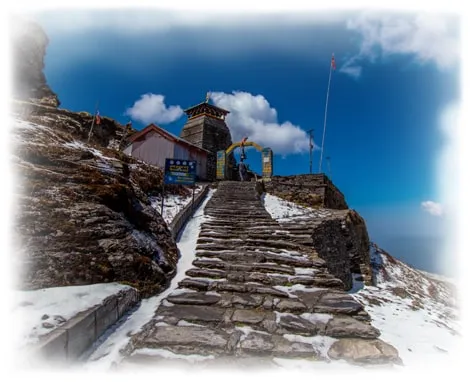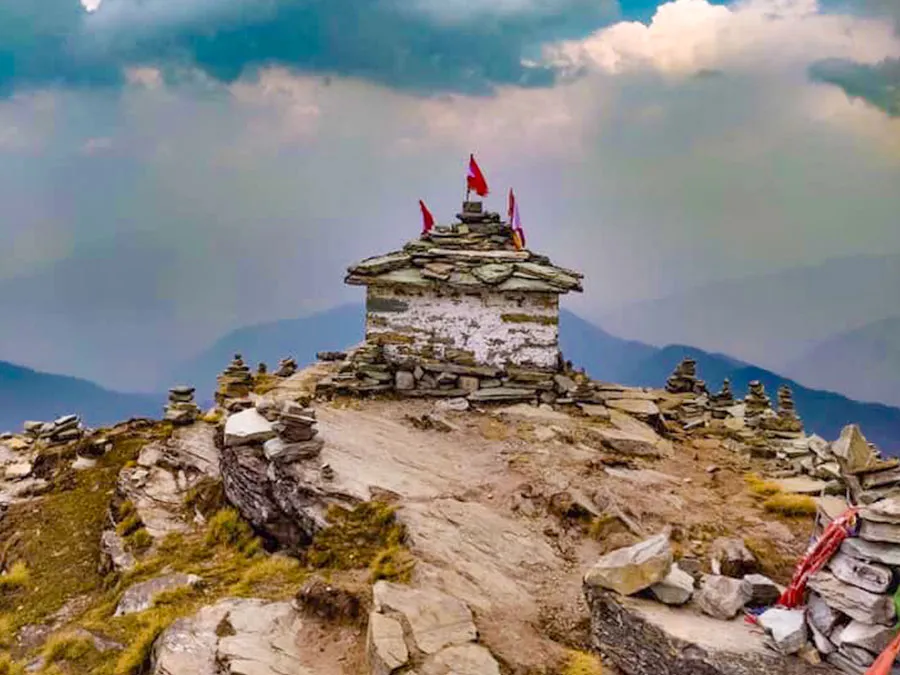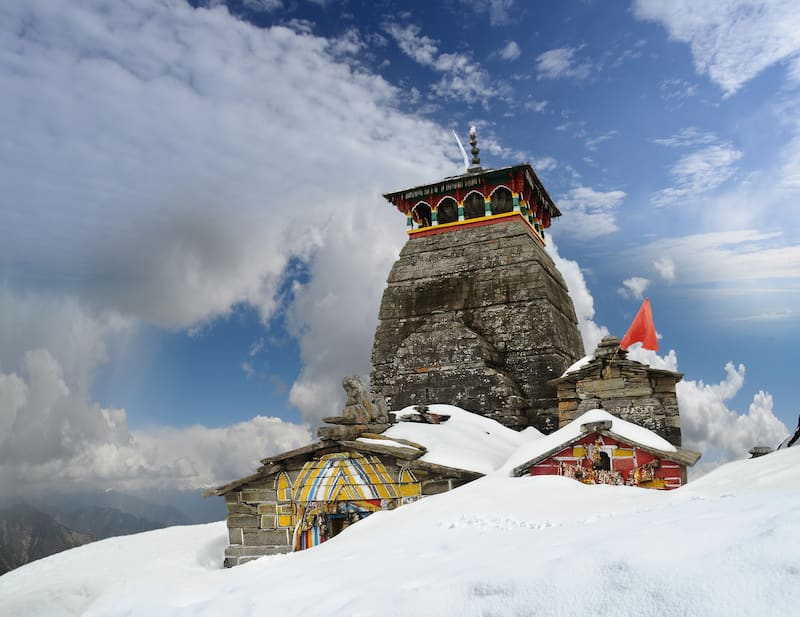chopta tungnath trek
Published on April 08, 2025
Chopta tungnath trek from delhi, Are you dreaming of an unforgettable mountain escape that blends spiritual serenity, natural beauty, and thrilling adventure? Welcome to Chopta, the hidden paradise nestled in the Garhwal Himalayas. With Tour My Holiday, your journey to this untouched gem becomes not just a trip—but a soul-refreshing experience.
Whether you’re a nature lover, a trekking enthusiast, or someone in search of peace, our Chopta tour package is designed to give you the best of everything. From lush meadows to snow-clad peaks, and from the mystical Tungnath Temple trek to the breathtaking Chopta Chandrashila trek from Delhi, we’ve got it all covered—beautifully and affordably.
Why Choose Chopta?
Chopta is often described as a nature lover’s heaven. Located at an altitude of about 2,600 meters, it’s surrounded by deodar, pine, and rhododendron forests with panoramic views of the mighty Himalayas including Nanda Devi, Trishul, and Chaukhamba peaks.
But what truly makes Chopta unique is its Tungnath Temple, the highest Shiva temple in the world. The Chopta Tungnath trek is a short yet surreal journey through alpine meadows, whispering forests, and scenic valleys that feels straight out of a fairy tale.

The Magic of Chopta Tungnath Trek
The Chopta Tungnath trek is an easy-to-moderate 3.5 km trek that starts from Chopta and leads you to the divine Tungnath Temple. Along the way, you’ll witness blooming flowers in spring, snow-covered trails in winter, and golden meadows in autumn.
But the journey doesn’t end at the temple. If you're up for a bit more adventure, continue towards Chandrashila Peak, which offers one of the most stunning sunrise views over the Himalayan range. Our Chopta Chandrashila trek from Delhi includes this magical summit experience as part of a well-curated itinerary.
Best Time to Visit Chopta
-
Spring & Summer (March to June): Pleasant weather, clear skies, and green landscapes.
-
Autumn (September to November): Perfect for trekking with mild weather and golden hues.
-
Winter (December to February): Snow-laden trails and a wonderland vibe—ideal for snow treks.
Each season offers something special, and we help you pick the best time based on your travel goals.
History of Tungnath Temple Trek from Delhi: A Spiritual Journey Through the Garhwal Himalayas
Nestled at an altitude of 3,680 meters, the Tungnath Temple is not just the highest Shiva temple in the world but also one of the most spiritually enriching destinations in Uttarakhand. The Tungnath Trek has gained immense popularity among devotees, trekkers, and nature lovers alike, especially those embarking on this soulful journey from Delhi. But to truly appreciate the experience, it’s important to understand the rich history and spiritual essence behind this revered pilgrimage and trek.
Origins of Tungnath: Where Mythology Meets the Mountains
Tungnath, which means “Lord of the Peaks,” is steeped in ancient Hindu mythology. According to legends from the Mahabharata, the temple was built by the Pandavas as a way to seek forgiveness from Lord Shiva after the Kurukshetra war. The tale goes that Lord Shiva, angry over the bloodshed, avoided the Pandavas and disguised himself as a bull. As they pursued him, the deity’s body is believed to have reappeared in different locations—his arms emerging at Tungnath.
This story led to the formation of the Panch Kedar temples, five sacred Shiva temples in the Garhwal region. Tungnath is the third Kedar and holds immense religious importance for followers of Lord Shiva.
A Spiritual Trekking Route: From Mythology to Modern-Day Trails
Though ancient sages and pilgrims once traversed these routes on foot through dense forests and rocky terrain, the modern-day Tungnath trek is well-marked and welcoming to spiritual seekers and adventure lovers alike.
For travelers starting their journey from Delhi, the route has become a mix of road travel and trekking, making it one of the most accessible high-altitude pilgrimages in North India.

Delhi to Chopta: The Gateway to Tungnath
The journey begins in the bustling capital city of Delhi, where travelers embark on a scenic road trip covering nearly 450 kilometers to reach Chopta, often referred to as the base point for the Tungnath trek.
-
By Road: Most prefer driving or hiring a taxi for this 10–12 hour journey, passing through beautiful towns like Rishikesh, Devprayag, Rudraprayag, and Ukhimath.
-
By Train: One can also take a train from Delhi to Haridwar or Rishikesh and then continue the journey via road.
-
By Bus: Buses also ply from Delhi to major hubs like Rishikesh and Rudraprayag, from where local transport can take you to Chopta.
The Trek from Chopta to Tungnath
Once in Chopta, the Tungnath trek begins. It’s a relatively short yet steep trek of about 3.5 km. Despite its manageable distance, the altitude and incline make it challenging, especially for first-time trekkers. But every step is worth it, as you’re surrounded by:
-
Snow-capped Himalayan peaks
-
Rhododendron forests in bloom during spring
-
Chirping Himalayan birds
-
And the deep silence of ancient spirituality
The trek is open year-round, but each season offers a unique charm—from lush green meadows in summer, golden leaves in autumn, to snow-covered trails in winter.
Tungnath Temple: A Testament of Time and Devotion
Reaching the Tungnath Temple, one feels an overwhelming sense of peace. Built more than 1,000 years ago, this stone temple stands resilient against the elements, continuing to draw thousands of pilgrims and trekkers each year.
The temple is believed to be built by Adi Shankaracharya, the 8th-century saint who unified various Hindu traditions. The simplicity of the architecture reflects the spiritual purity and timeless nature of this holy site.
The shrine opens during April-May and closes in November, after which the idol is moved to Mukkumath, a nearby village, for winter worship.
Beyond Tungnath: The Path to Chandrashila Summit
Many trekkers extend their journey to the Chandrashila Summit, which is another 1.5 km uphill from Tungnath. At around 4,000 meters, Chandrashila offers panoramic views of the mighty Himalayan ranges including Nanda Devi, Trishul, Kedarnath, and Chaukhamba.
This peak is said to be the spot where Lord Rama meditated after defeating Ravana, adding another layer of mythology to the trek.

Top Sightseeing Spots on the Tungnath Temple Trek from Delhi
A Soul-Stirring Himalayan Journey Through Nature & Spirituality
Embarking on the Tungnath Temple trek from Delhi isn’t just a pilgrimage or a hike—it's a spectacular journey that weaves through sacred rivers, mystical temples, mirror-like lakes, and majestic Himalayan peaks. Each stop on this trail carries its own charm, blending natural beauty with deep-rooted spirituality.
Here are the must-visit sightseeing spots that will enrich your Tungnath trekking experience and leave you spellbound.
1. Devprayag – The Sacred Confluence
Where two rivers become the Ganga
Located on the way from Delhi to Chopta, Devprayag is a significant spiritual stop where the Alaknanda and Bhagirathi rivers merge to form the holy River Ganga. Surrounded by steep hills and ancient temples, the town exudes divine tranquility.
Highlights:
-
Raghunathji Temple
-
Ganga Aarti by the confluence
-
Stunning views of emerald waters meeting
2. Dhari Devi Temple – Guardian of the Himalayas
A powerful Shakti Peeth on the riverside
Perched on a rock in the middle of the Alaknanda River, Dhari Devi Temple is one of the most revered shrines in Uttarakhand. Known as the protector deity of the region, this temple is deeply spiritual and offers a unique riverside setting that's both calming and energizing.
Why Visit:
-
Connect with local legends and divine feminine energy
-
Peaceful stopover en route to Rudraprayag or Chopta
-
Great for photography and meditation
3. Ukhimath – The Winter Home of Lord Kedarnath
A small town rich in mythology and devotion
Located around 30 km from Chopta, Ukhimath serves as the winter seat of Lord Kedarnath when the Kedarnath temple shuts during snow season. The town is home to ancient temples, vibrant culture, and panoramic views of the snow-capped Garhwal range.
Must-see:
-
Omkareshwar Temple (houses Kedarnath idol in winter)
-
Quiet mountain village vibes
-
Ideal for cultural immersion
4. Deoria Tal – The Mirror Lake of the Himalayas
Where the mountains meet their reflection
A short 2.5 km hike from Sari Village, Deoria Tal is a pristine high-altitude lake famous for its crystal-clear reflections of Chaukhamba peaks. Surrounded by thick forests and meadows, it’s a perfect place to camp or just absorb the silence.
Why it’s special:
-
Mythically linked to the Mahabharata
-
Excellent spot for birdwatching and stargazing
-
Ideal for camping and photography
5. Tungnath Temple – Highest Shiva Temple in the World
A sacred treasure standing above the clouds
At 3,680 meters, Tungnath Temple is not only the highest Shiva temple on Earth but also a timeless symbol of devotion and endurance. Believed to be over 1,000 years old, it is part of the legendary Panch Kedar temples built by the Pandavas.
What makes it unmissable:
-
Rich mythology and architecture
-
Scenic 3.5 km trek from Chopta
-
Surrounded by snow-clad peaks and rhododendron forests
6. Chandrashila Summit – The Crown of the Trek
Touch the skies and witness a 360° Himalayan panorama
Just 1.5 km further from Tungnath lies the Chandrashila Summit, a place of meditation and legend. According to mythology, this is where Lord Rama meditated after defeating Ravana. At an elevation of around 4,000 meters, the summit offers unmatched views of Nanda Devi, Kedarnath, Trishul, and Chaukhamba peaks.
Best time to go: Early morning for sunrise
Vibe: Peaceful, powerful, and profoundly inspiring

Why Choose the Tungnath Trek from Delhi?
For residents of Delhi and nearby regions, the Tungnath trek offers:
-
A spiritual retreat away from the chaos of city life
-
A chance to explore mythological history and Himalayan culture
-
An ideal introduction to high-altitude trekking
-
Opportunities to combine the trip with Rishikesh, Devprayag, or Chopta camping adventures
Tungnath Temple Trek Weather Guide
Best Time to Visit, Seasonal Conditions & Travel Tips
The Tungnath Temple trek from Delhi takes you from the plains of North India to the high-altitude Garhwal Himalayas, where the weather can shift dramatically with the seasons. Understanding the seasonal weather is key to planning a safe, enjoyable, and scenic trek.
Spring (March to April)
Weather: Cool and Pleasant
-
Temperature: 8°C to 15°C during the day, 0°C to 5°C at night
-
Trail Conditions: Snow may still be present in March, gradually clearing by April
-
Highlights: Rhododendrons in bloom, green meadows, fewer crowds
Summer (May to June)
Weather: Mild and Clear
-
Temperature: 10°C to 18°C during the day, 4°C to 8°C at night
-
Trail Conditions: Dry and open; perfect trekking weather
-
Highlights: Crystal-clear skies, temple opens for the season, stunning mountain views
Monsoon (July to Mid-September)
Weather: Wet and Misty
-
Temperature: 10°C to 16°C (cool but humid)
-
Trail Conditions: Slippery and risky due to landslides and leeches
-
Highlights: Lush greenery, mystical cloud cover
Autumn (Mid-September to November)
Weather: Clear and Crisp
-
Temperature: 5°C to 15°C during the day, -2°C to 5°C at night
-
Trail Conditions: Dry and firm; excellent visibility
-
Highlights: Golden forests, clear skies, ideal trekking conditions
Winter (December to February)
Weather: Cold and Snowy
-
Temperature: -5°C to 8°C
-
Trail Conditions: Covered in snow; Tungnath Temple is closed
-
Highlights: Snow trekking, magical landscapes, frozen forests

Weather Tips for Trekkers
-
Layer your clothing: Especially in spring and autumn, as temps change fast.
-
Check the weather forecast before leaving Delhi.
-
Snow gear recommended from December to March.
-
Avoid monsoon for safety and trail stability.
-
Best months to visit: April to June and September to November
Frequently Asked Questions:
1. What is the best time to visit Tungnath Temple?
The best time is April to June and September to November, when the weather is pleasant, trails are clear, and the temple is open for devotees and trekkers.
2. How far is Tungnath Temple from Delhi?
Tungnath is about 450–470 km from Delhi, followed by a 3.5 km trek from Chopta. It takes roughly 12–14 hours by road, depending on traffic and stops.
3. Is the Tungnath trek difficult?
No, it’s a moderate-level trek, suitable for beginners. The 3.5 km uphill trail is steep but manageable with regular breaks and good footwear.
4. Is Chandrashila summit worth visiting?
Absolutely! The Chandrashila summit offers a 360° view of snow-clad Himalayan peaks like Nanda Devi, Trishul, and Chaukhamba. It’s just 1.5 km above Tungnath.
5. Can I visit Tungnath in winter?
Yes, but the temple closes in November due to heavy snowfall. You can still do snow trekking to Tungnath and Chandrashila for a winter adventure.
6. Where is the starting point of the trek?
The trek starts from Chopta, a beautiful hill station in Uttarakhand. It’s surrounded by pine forests and serves as the base for the Tungnath trek.
7. How can I reach Chopta from Delhi?
Take a bus or train to Haridwar or Rishikesh, then a cab to Chopta. You can also drive directly or book a Chopta tour package from Delhi.
8. Is accommodation available near Tungnath?
Yes, you’ll find cottages, homestays, and campsites in Chopta and Sari village. It’s ideal to stay overnight before or after the trek.
9. What should I pack for the trek?
Carry warm clothes, comfortable trekking shoes, water bottle, raincoat, snacks, and first-aid essentials. In winter, pack gloves, woolens, and snow gear.
10. Is it safe to trek solo?
Yes, it’s generally safe, but inform someone, check weather conditions, and avoid trekking after dark. Traveling with a group or guide is always safer.
11. What is the altitude of Tungnath Temple?
Tungnath is located at an altitude of 3,680 meters (12,073 feet), making it the highest Shiva temple in the world.
12. What makes Tungnath Temple spiritually significant?
It’s one of the Panch Kedar temples, believed to be built by the Pandavas. The temple is dedicated to Lord Shiva’s arms, symbolizing penance and power.
13. Can kids and elderly people do the trek?
Yes, with slow pacing and breaks, the trek is suitable for fit children and older adults. It’s short but steep, so caution is advised.
14. Are there food options on the trek?
Yes, small dhabas and stalls at Chopta and near the trail offer tea, Maggi, parathas, and basic snacks. Carry your own light snacks too.
15. Is mobile network available at Tungnath and Chopta?
Mobile network is patchy. BSNL and Jio may work in some areas near Chopta, but signal fades as you trek higher. Plan accordingly.
.jpg)